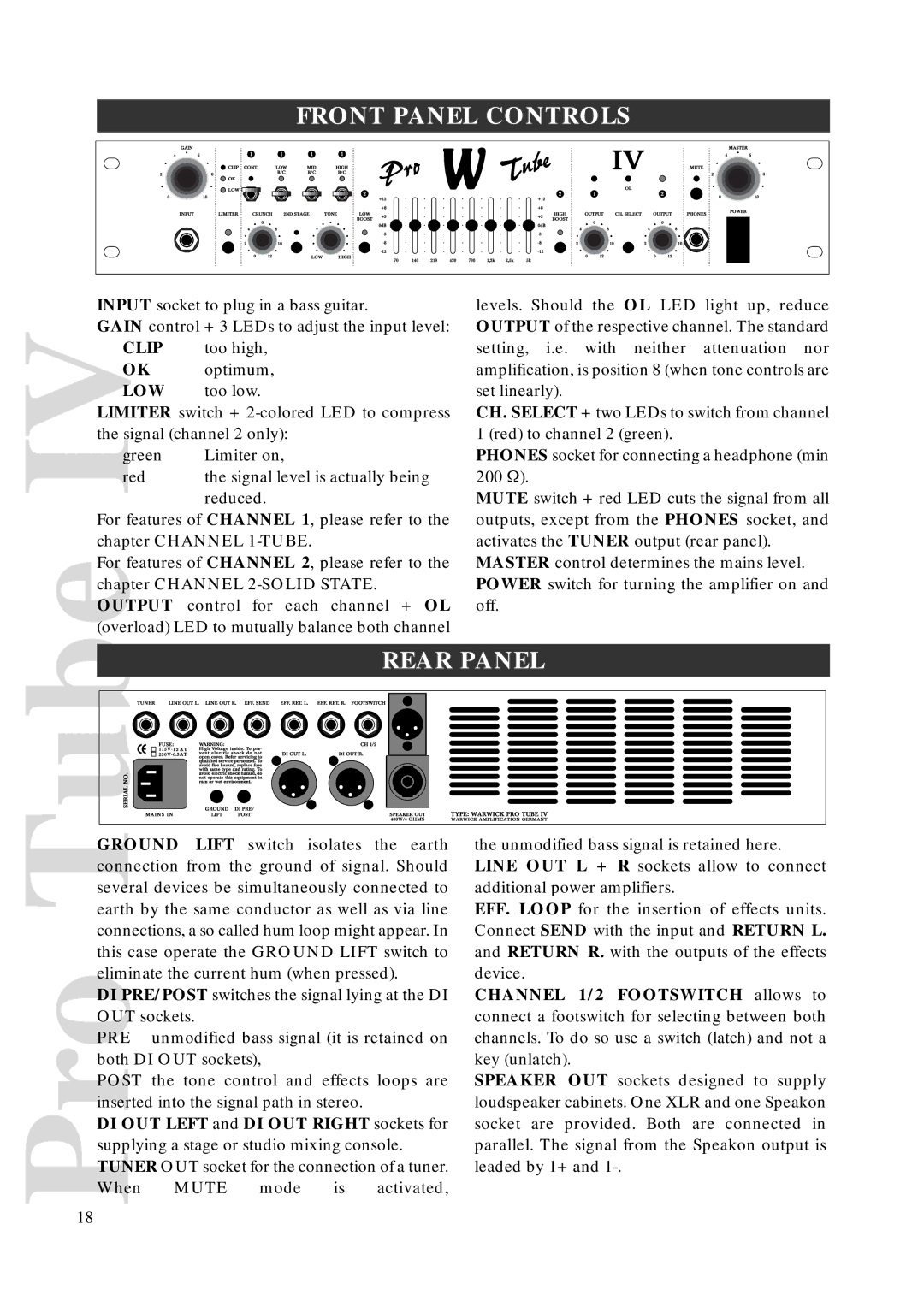AMPs specifications
Warwick Amplification, commonly known as Warwick AMPs, has positioned itself as a significant player in the music industry, particularly in the realm of electric bass amplification. Known for their innovative technologies and quality craftsmanship, Warwick’s amplifiers have garnered a loyal following among musicians and sound engineers alike.One of the standout features of Warwick AMPs is their commitment to providing high-quality sound reproduction. With a focus on clarity and warmth, their amplifiers ensure that the nuances of the instrument are faithfully captured. This is particularly important for bass players who seek rich, deep tones without sacrificing definition. The use of premium components in the circuits enhances the overall fidelity and performance of the amplifiers.
Warwick amplifiers often incorporate cutting-edge technologies that set them apart from their competitors. For example, models like the Warwick BC series utilize advanced EQ controls, allowing musicians to shape their sound with precision. With features such as a built-in compressor and flexible gain structure, players can achieve a variety of tones, from punchy slap sounds to smooth, round tones suited for jazz or pop.
Another characteristic that defines Warwick AMPs is their robust construction. Built with durability in mind, these amplifiers can withstand the rigors of touring and live performances. Many models feature rugged cabinets made of high-quality wood and sturdy hardware, ensuring they can endure the challenges of the road without compromising performance.
Portability is also a key consideration in the design of Warwick AMPs. Many of their models are lightweight and compact, making them ideal for musicians who travel frequently. Despite their smaller size, these amplifiers do not skimp on power, often delivering impressive wattage suitable for both practice and live performances.
Moreover, Warwick emphasizes versatility in their amplifiers. Many of their models come with multiple inputs, allowing for easy connection of various instruments or effects pedals. This flexibility enables musicians to customize their setup according to their specific needs.
In conclusion, Warwick Amplification stands out for its dedication to sound quality, innovative technologies, durability, portability, and versatility. Musicians seeking reliable and high-performing amplifiers will find in Warwick AMPs a brand that not only meets but exceeds their expectations. Whether in a studio setting or on stage, Warwick amplifiers are designed to elevate the playing experience, making them a favored choice for bassists worldwide.

